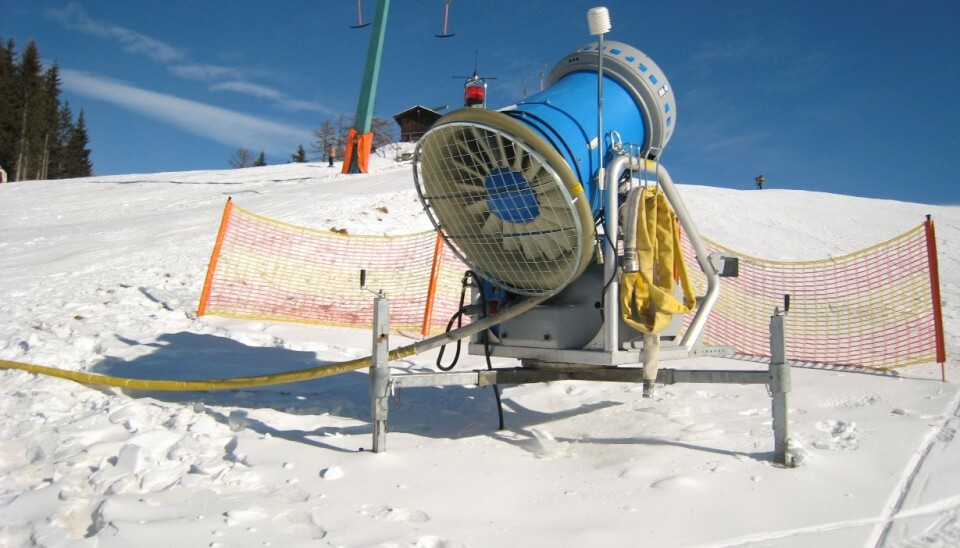This article was produced and financed by The Research Council of Norway

Nanoscale impulse radar measures depth of snow
Snow is the be-all and end-all for alpine ski resorts. Now a tiny sensor has been developed to determine how much snow there is on the slopes and how much more should be produced.
Denne artikkelen er over ti år gammel og kan inneholde utdatert informasjon.
The sensor can be used in preparing trails as well as slopes at Nordic and Alpine skiing facilities. It can also be used to measure the thickness of ice to determine whether it is safe for cars, for instance.
The sensor is based on Norwegian radar technology and is no larger than a match head.
The processor chip from Novelda is the result of high-level nanotechnology. The minuscule silicon chip has already become an international success and customers around the world are creating applications based on the technology.
Snow measurements available via Google Earth
The US-based company Flat Earth has drawn on Novelda’s technology to develop the SDS-715 snow-depth sensor. It is capable of measuring snow depth from 15 cm to 2 m with a margin of error of 3.5 cm.
The sensor is mounted beneath the vehicle that prepares the tracks. Snow depth is measured at one-second intervals. A separate application can be used to display snow depths via Google Earth.
A corresponding system has been approved for use in Russia to measure whether or not ice is thick enough for cars to drive on.
May replace pulse sensors
There are widespread applications for the nanoscale sensor. Eirik Næss-Ulseth, Chairman of the Board in Novelda, envisions integrating the chips into athletic garments to replace pulse sensors that are currently held in place with an elastic band.
“We have already proven that the chips can be used to measure pulse and breathing rates at a distance,” he explains.
Novelda was founded as a spin-off company from the University in Oslo. The company’s activities have received substantial funding from the Research Council of Norway under the programme for User-driven Research based Innovation (BIA) and the large-scale programme on Core Competence and Value Creation in ICT (VERDIKT), as well from the EU Commission under EUREKA’s R&D programme, Eurostars.
Translated by: Glenn Wells/Carol B. Eckman































